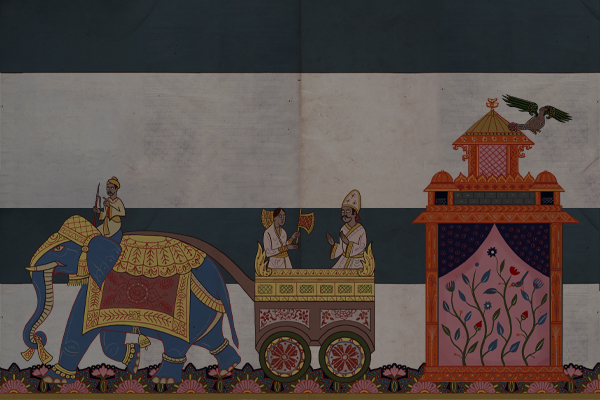This is what I read about the Battle of Kursk.JyriErik wrote:I believe it's been mentioned earlier, but the 2nd Guards Tank Corps was annihilated by airpower alone at Kursk (giving it the dubious distinction of being the only such unit in all of WW II). However, you can make the point that quite a few units were made unfit for combat by airpower, allowing ground troops to (essentially) roll through what was left and finish the job airpower started which could be considered annihilation in game terms.rkr1958 wrote: There are no accounts in WWII of a full strength corps being destroyed by airpower alone.
Jyri
http://en.wikipedia.org/wiki/Battle_of_Kursk
Here is the section about the 2nd Tank Corps.
"Main operations — the southern face
Air battles
The German advance in the SouthThe offensive opened, as in the north, with a mass of air activity. German air attacks helped badly maul the Soviet 57th and 67th Guard Divisions. As the Luftwaffe shifted its attention against the 6th Tank Corps, it left the skies empty over the 4. Panzerarmee. As a result of Soviet superiority in the air, reinforced Soviet defences, and a lack of heavy air support, the Großdeutschland Division had around 80 of its 350 tanks operational. Later, the 2nd Soviet Guards Tank Corps attacked the flank of the 1st SS Division Leibstandarte SS Adolf Hitler. In desperation, the Germans launched waves of Fw 190 Fs of 4.(Pz)/Schlachtgeschwader 1 and Hs 129s of I./Jagdgeschwader 51's Panzerjägerstaffel to halt the attack. Using SD-2 anti-personnel bombs, the Luftwaffe was able to inflict heavy losses to Soviet soldiers and "soft" vehicles. The Luftwaffe attacked the Soviet 2nd Tank Corps from dawn to dusk, and Hauptmann Bruno Meyer, Staffelkapitain of I./Sch.G 1 noted: "It was impossible for us to count how many tanks we knocked out". As a result of the losses sustained by the Soviet 2nd Tank Corp, the 5th Guards Tank Corps began their offensive against the II.SS Panzerkorps alone, and failed, with heavy losses.[60] By the end of the day, 2 VA lost 45 aircraft (including 22 Sturmoviks), 17 VA lost 37 Sturmoviks alone. The Soviets lost approximately 90 machines on this date, while the Luftwaffe suffered 11 losses, mostly Ju 87s. The Soviets began attacking German rear areas at night, with the 2 and 17 VA flying 269 sorties in 24 hours.[61]"
Here you can read that the 2nd Tank Corps launched an attack upon the 1st SS LSSAH division and was hit hard by Luftwaffe units all day. So it was in heavy land combat when the Luftwaffe attacked it and the article didn't see the unit was completely destroyed. It simply became so battered so it couldn't fight (getting down to a cadre).
In CeaW BJR-mod this operation can be seen as a German armor attack upon the Russian tank unit. First the Luftwaffe launch 2 bombers (max for the hex) and then attack with an armor unit. Then the battered Soviet tank unit retreats and the new hex can again be attacked by 2 air units and so on if the unit retreats again.
So a unit that's retreating can be pursued by even more air attacks and eventually annihilated by mostly air, just as what happened at the battle of Kursk.
The attack attack limitation is not per unit, but per hex. That is an important distinction.
Another reason that the air attack limitation is important is without it the entrenchment levels for cities, fortresses and capitals could go from max extrenchment level to 0 in just one turn. E. g. if you send 8 air raids against a capital then you can break even the most entrenched unit in just one turn. The Gustav line can easily be crushed etc because you simply focus all your air upon one hex until it falls. In the real war the Allied struggled against the Gustav line in Italy for many months before they broke through.
The air attack limitation per hex protects the units in cities, fortresses and capitals because these units can't be forced to retreat so they will often survive the air attack and land attacks unless it comes from 3+ hexes. Then the battered unit can be replaced or repaired. This better simulates that cities could last attacks for several months before falling. Without the limitation it's easy for the Germans to e. g. take Leningrad. Just send 4 bombers and some fighters to deplete it severely and let the Finns and Germans from the south kill the Leningrad defender. In the real war Leningrad never fell and survived a siege for almost 1000 days.
So unlimited air attacks per hex can be exploited and ruin the fun for an otherwise good game. We think 2 air attacks per hex is enough, but it can easily be increased to 3 or more in general.txt if that's desired. 3 is attacks per hex is still much better than unlimited attacks as now.















